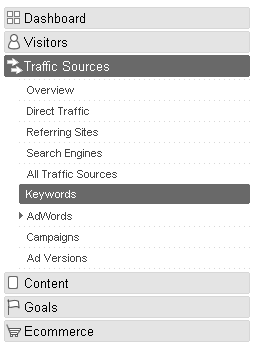One of the vital elements of every PPC campaign is defining of negative keywords. Why should you pay for clicks with ‘false’ traffic that will result in loss of money.
Negative keywords are emphasized in campaigns based on broad and phrase matches, and without negative keywords it could behave as a double jeopardy (researches show that 70 % of AdWords campaigns are based exactly on these two types of keywords).
How to identify those keywords is the first question that comes to our mind. How to find out which phrases to use? How to determine those profitable ones and how to avoid the exclusion of keywords that could lead to profit?
Lets start by categorising them into three groups:
Keywords obtainded by research.
Keywords obtained by examining statistics.
Keywords that could be obtained by using templates.
Keywords obtained by research
Actually, when we talk about keywords obtained by research, we are talking about the basic step of everything related to the search marketing. Without research and keyword selection on the basis of your own assesment (in this case), you are on the path of renouncing a significant portion of the budget you could have used for those keywords that could have brought you conversions and respectable traffic.
Considering the fact that I have explained everything about this step in my keyword research tutorial, I will direct you to the second step and tools that can help you do the job.
Enter a certain keyword you use in your campaign and study all variations provided by the tool you are using. For each one that you think is redundant and not related to the product you are advertising, add it to the document you will later apply to your campaign strategy.
(Example: you are advertising software with a certain price — therefore, excluding keywords containing word ‘free’ would surely be a smart move).
Keywords obtained by examining statistics
Detailed visit statistics is something that every site needs in order to do some serious bussiness. For example, Google Analytics — a free tool that gives you the oversight of keywords through which visitors came to your site:

The first step that needs to be done is the segmentation of visitors according to ‘paid’ and ‘non-paid’ categories:

Note: ‘paid’ option shows keywords you use in your campaign — therefore, does not recognize an exact term that is entered into search engine.
‘non-paid’ option can give you partial insight into terms/words which led visitors to your site — do not ignore this element .
Keywords that could be obtained by using templates
By quick search on Google, it is easy to obtain already existing lists gathered and published by some hard-working Internet users. Lists can be very detailed and categorised in order to be very useful after you had decided what your area of interest is. Of course, all suggested words should be taken into consideration, go through the list and select those words you think could be useful to your campaign.
Implementation of selected keywords and phrases
After you had created a useful list, it is time to apply them to your campaign. Google AdWords system recognizes negative keywords according to the “-” element that preceeds every negative keyword (e.g. “-free” if you want to exclude your ads from search results containing that word). The principle is similar with other PPC systems, but to be sure, check documentation before implementation (information is easy to obtain).
Negative phrases can be added on the level of campaign or on the level of ad groups — I will not go deeper into this topic, but for those with questions go to Adwords Help Centre.







